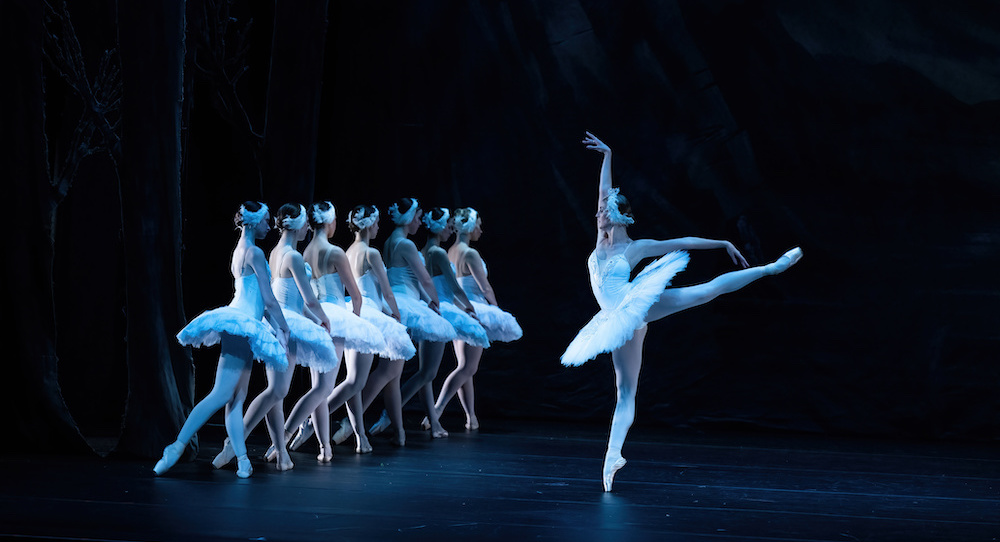Darling Harbour Theatre, ICC, Sydney.
29 October 2022.
In February, the war in Ukraine broke out, and the instability in the country has meant that much of normal life has been on hold, hopefully temporarily. On the heels of a worldwide pandemic, the live performance arts have already taken a significant blow. In a speech given to the Royal Academy in 1953, Winston Churchill, the man who carried Britain through World War II as its Prime Minister, made the following statement: “The arts are essential to any complete national life. The nation owes it to itself to sustain and encourage them.”
It is with this hope that Igone de Jongh, former principal ballerina with the Dutch National Ballet, and her production company Senf Theatrepartners sought to create a home for Ukrainian dancers to be able to continue to train and create, until they are able to return to their own cultural centres. Working with the Mayor of The Hague, the old conservatory has been repurposed to house and allow rehearsal and training space for Ukrainian dancers, in what is now the Dutch Centre for Ukrainian Dancers. Out of this, The United Ukrainian Ballet Company was born, a company that is currently able to perform and tour with the generous support of many.
The United Ukrainian Ballet has been performing Swan Lake in Australia, as a part of its world tour, a ballet with strong historical ties to Ukraine, including Tchaikovsky’s own family background. This version of Swan Lake sees a traditional ballet come to life steeped in the old ways of staging a ballet, albeit without the live orchestra — painted cycloramas, simple but bold and beautiful sets, and costumes that did not try to upstage the choreography but rather were a nod to the rich history of this well-known and much-loved work. The choreography itself was also very much the traditional work, no attempt made to update or contemporise the classic.
The opening scenes introduced us to a cast rather large for the stage, and it seemed they were rather self-conscious of the crowdedness. This immediately, albeit unfortunately, shone a light on the lesser skill of the corps. They were not a technically strong group, and there were times when it was not clear some members were going to be able to execute the choreography. However, it is not clear that all these dancers do come from a professional background, so for the purposes of this company and the reasons for their beginning, may give reason for this.
It was so lovely to see the national dance forms Neapolitan tarantella, Polish mazurka with a hint of krakowiak, Hungarian czardas and a Spanish dance being performed by dancers who have grown up with their own similar traditional dance forms, having a unique understanding of the stylistic and performative elements of these traditions. It felt so natural for these dancers to share these moments with us, in beautiful costumes that gave nod to traditional styles. In a way, this production was transformative, taking us to another time and place. There really is nothing like viewing a dance work translated by the artists who grew up in the culture the story emerged from.
Kateryna Chebykina danced Odette/Odile in this show, with Oleksii Kniazkov as her Prince Siegfried. Chebykina was just stunning in the lead role. With its demanding variations and relentless, energetic build up, she shone through to the end, engaged and captivating with strong technical prowess as she owned her role. Kniazkov was a beautiful technician, but his Prince did not hold the space with the power of Chebykina’s Odette/Odile. Pavlo Zurnadzhi was a lot of fun as the court jester, showing his strong technique with a flair to his character that shone through at all the right moments. The pas de trois with Vladyslava Ihnatenko, Martin Korol and Olena Mykhailova had strength, playfulness and a buoyancy to their performance that was just delightful to observe.
The set was painted cycloramas that looked straight out of a classic fairy tale, with branches edging around the proscenium for the lake, giving the right amount of mystic. The palace was bold, but not overly done, golden ornate lighting poles, and simple but classic furniture pieces to add to the atmosphere. Costuming had a traditional feel with elements such as head pieces with particular square shapes and dresses that reflected national costume, as well as Prince Siegfried wearing an ornately embroidered shirt, a talisman against evil in Ukraine tradition.
The program ended with all the dancers gathered on stage, bringing Ukraine flags with them, one with ‘Make dance not war’ printed boldly. They then commenced to sing the State Anthem of Ukraine. The audience stood in solidarity. It was an incredibly meaningful moment, this act of defiance against the atrocities being committed at present in their home country. This ballet is a statement of a people who will not be crushed, and who will defend their sovereignty. Interestingly, the program had a variety of photos for the dancers, all very personal and individual, perhaps showing the reality that what is occurring is to a multitude of individuals, not just a faceless crowd, who stand under one yellow and blue banner.
Swan Lake by The United Ukrainian Ballet is a wonderful opportunity to support these dancers, keeping ballet in Ukrainian culture alive, and what a treat to see a Ukrainian ballet company on our shores, not something we usually see in Australia. If you can get out and see them, don’t miss it; it really is a treat to see a company performing a ballet so native to their culture, and it is a great chance to show Ukraine dancers some love.
By Linda Badger of Dance Informa.















